(Forecast)
Sunday (High 77): Partly cloudy with an isolated shower or two possible, maybe a thunderstorm. Rain is likely at night, and an isolated thunderstorm is possible then too.
Monday (High 76, Low 57): Mostly sunny. Some lingering rain possible in the morning.
Tuesday (High 68, Low 47): Partly cloudy. Cooler.
(Extended Outlook)
Wednesday (High 66, Low 39): Sunny.
Thursday (High 72, Low 41): Mostly sunny.
Friday (High 78, Low 59): Thunderstorms likely - some possibly severe.
Saturday (High 73, Low 61): Gradual clearing.
(Notes)
Here are the preliminary tornado surveys from last night's severe weather event.
The next SKYWARN class is 6 PM this Wednesday in Decatur at the Alabama Institute for the Deaf and Blind. And then 6 PM Thursday there is another class at the Alabama Institute for the Deaf and Blind in Huntsville. They have a new location, which is 4092 Memorial Parkway, Suite 105. For both of these classes, American Sign Language interpreters and CARTS transportation services will be provided. And that's the last of the season's storm spotter classes until an advanced online class at the end of May. Those classes are from the National Weather Service in Huntsville.
And then the National Weather Service in Nashville is doing Weather101 classes. They are all online, as far as I know. Using the "GoToWebinar" program. There is one this Monday at 7 PM about how the National Weather Service does storm surveys. I have to say, that one is well-timed.
(Discussion)
At 1:35 AM it is 52 degrees in Cullman with clear skies and perfect visibility. The dewpoint is 46, making the relative humidity 82%. Winds are calm, although they were variable and somewhat gusty throughout the day today (technically yesterday, since I'm writing this so late). The pressure is 29.93 inches and steady. The High for Saturday was 79, and the Low was 54. That Low of 54 occurred right before Midnight and the changing of the days. It partly cloudy and 52 degrees in Jasper, sunny and 54 in Haleyville. Haleyville also has winds from the Northeast at 5 miles per hour.
Our upper-level winds are still from the Southwest, and that front has stalled out a little further North than was expected a few days ago.
Related to that, we have a severe weather risk over mainly the Southern half of Alabama. It would not be impossible for a stronger storm to creep into North Alabama on Sunday, but the risk is very low.
They already have a severe thunderstorm watch down there and some warnings there in Southeast Alabama, some storms close to the Georgia state line. These are supercell thunderstorms, but the main threat is large hail (as in golfball-sized large hail) and damaging winds. Later on Sunday, parts of South Alabama, getting down sort of close to the Gulf Coast, may also have a tornado threat. And some of the thunderstorms could still be supercells.
Looks like while this front stays stalled, moving very slowly North and South in the state, today (Sunday) we'll have only a chance of isolated showers in North Alabama. And then rain will become likely at night and into Monday morning. High today about 76-77. Again the chance of any storms reaching severe limits this far North is minimal. Most of us will probably just get rain, but there could be a few thunderstorms in the mix, probably not severe.
On Monday we'll quickly become mostly sunny with a High in the mid-70's and a Low in the mid-to-upper 50's. Then a shortwave trough on Tuesday should bring us an increase in clouds, think it is too far South to bring us much (if any) rain, High in upper 60's, Low in upper 40's.
Temperatures may dip into the upper 30's Wednesday morning, strong high pressure moving through the region and also up into the Ohio Valley into New England, Highs probably struggling to get up to the upper 60's.
Then on Thursday and Friday, another storm system will approach from the Plains. Our best timing for rain and storms may end up being Friday night.
If we get any rain on Thursday, I think it'll be at night, and we'll see a High in the lower 70's and Low in the lower 40's.
Friday I'm going with likely thunderstorm chances, and though it's a good way out, I think it may be another evening or night event. Looking for a High in the mid-to-upper-70's and a Low in the upper 50's.
They may have some severe weather out the Plains on Thursday, but the severe risk is expected to decrease as the system moves further East on Friday into Saturday.
Still have to keep an eye on the trends around here for Friday evening into Friday night. There may be enough unstable air and wind shear to support at least a lower-end threat for a few storms becoming severe. And it might get more organized, like this last event.

Looking at a forecast sounding Friday night somewhere around the Cullman/Morgan/Winston county lines (I don't always get my pointing and clicking exact), this could be another low instability/high wind shear severe weather potential around here. Which again, reminds me more of November or the times we get a severe weather threat during the Winter months, more than when we're about to get into April. Our main severe weather season (which we're in now) definitely does stay active and variable though. But just from my memory, without double-checking it, I think I've seen a lot more events in the Spring months where there is a lot of instability and not enough wind shear to really get severe storms organized. Or sometimes the front or other lifting mechanism is out of sync with the unstable air and/or wind shear. It's interesting to have weak instability and high wind shear this time of year. I'm sure it's happened before, but it seems like the exception for this time of year.
I'd like to say something about this last event: Even about 5-7 days out, the analog guidance was showing several past severe weather events that really got my attention. I chose not to mention them at length on this blog, because there were already people on social media making too much out of them. You have to take all that in context, but I mean, at times, one of the analogs was the April 27, 2011 superoutbreak, also the Super Tuesday outbreak of 2008. And I think at one point, one of the analogs was even the April 8, 1998 tornado outbreak where an F-5 hit close to Birmingham. And while I could tell from looking at everything else, this was unlikely to be a big tornado outbreak around here (and certainly nothing like 2011's), I kept noticing that some of the analog events, even if they didn't produce much right around here, produced some fairly significant severe weather, sometimes longer-track tornadoes, around the region. And even in the last couple of days leading up to it, there were times when the Super Tuesday outbreak was coming up as one of the top analogs. Since the other data and model forecasts of different parameters did not quite support that level of an event around here, I was not sure what to make of it. And since we had that one tornado-producing supercell from Southwest Mississippi that lasted into Northwest Alabama before finally occluding . . . that's what that analog model guidance was picking up on. No, this was not going to be an outbreak around here, where we had several really damaging tornadoes. But on Super Tuesday in 2008, we still sort of got the leftovers of that event. Unfortunately that included two supercells that produced an F-4 tornado each, I think in Lawrence and Jackson counties that night. And it didn't get quite that bad this time. From the damage I saw or heard about once that long-track monster got into Alabama, the tornado really weakened by the time it got into our area. It still seems to have been doing major damage as close as Amory, Mississippi. So that makes sense of the analog guidance. It was showing these really high-end events that were so devastating in the past. And it showed fewer of them as we got closer to the event. In the mix were a lot of routine or even low-end events. And that guidance was actually useful if you know how to interpret it. It reminded me of how I've heard many meteorologists over the years say, "It only takes one." That tornado had been going for 100 miles by the time it got here. The atmosphere was not as bad in North Alabama as it had been in Mississippi, plus the supercell got picked up by the squall line. (It kept producing tornadoes within that squall line, and notice, some had to be rated F-2, still a little more damage than average, was a nasty supercell storm even once it became part of a squall line and couldn't hog all the energy like it did across MS.) If things had gone a little differently, we could have had devastation in Northwest Alabama similar to what happened across much of Mississippi. And it could have continued tracking Northeast as a supercell out by itself, taking much of whatever was in its path. So that is a reminder to pay attention to some of the more outlandish things that model forecasts show, it's a matter of putting it into context. What we had for this event was a chance for an isolated really damaging tornado. And we came within a hair of getting it. That storm still did a good bit of tornado damage here, it just wasn't anywhere near as bad as back in Mississippi. It was a really close call. And even though things did go better, a lot of the damage it produced . . . I mean, a rating of E/F-2 still qualifies as a "strong" tornado. And one man did lose his life in a mobile home at one of the points this storm produced F-2 tornado winds.

I think we'll clear out pretty quickly on Saturday, but will keep a 20% rain chance in there to account for rain lingering early in the morning. By the way, this next Saturday is April Fool's Day. If the weather does look concerning for the first full week of April, I'll hold off on the jokes. Some people may not know this, but for that really bad tornado outbreak of April 3-4, 1974 (the worst until April 27, 2011), there was actually an event a couple days before, on April 1, 1974. There was a pretty rough tornado outbreak on April Fools Day. And I remember two guys in the Weather Bureau (title before Weather Service) had a conversation where one talked about how hard that event had been. And then I think it was one of his supervisors told him, "Well if you didn't like that one, you're really not going to like this one in a couple of days." Always have to watch the month of April. The severe weather threat tends to start to taper off the further we get into May, and then it's rare to have it in the Summer except just short-fused storms that cook up in the summer heat and humidity, rain themselves out quickly even if they do knock down some trees or power lines. The month of April has always been the worst for us. So I'd encourage everybody to stay tuned to the weather as we get into next month. We've already had kind of a rough year for severe weather already. And we have to be on the alert in case we do get one of those days where the severe weather threat is significant, like the Mississippi Valley got yesterday.
Oh by the day, High near 70-ish on Saturday, Low near 60. So again not expecting much of a cooldown behind the front. Could still see another frost in the first or second week of April, can't rule it out. If you get into the second week of April and there are no forecasts for temperatures near freezing, then I think it's safe to plant something.

Taking a look at the storm reports from yesterday, this really wasn't that widespread of a tornado outbreak, like I would have expected from the model data and the forecasts. From what I can see, all the tornado reports seem to have come from the same two supercell thunderstorms, mainly that one that started down along the Mississippi River and kept producing tornadoes even after it got picked up in a squall line here in North Alabama. There was another supercell that moved through mainly Lauderdale County and still did some tornado damage. There was a lot more severe wind in this event than tornadoes. We'll see what the surveys turn up, but right now, it looks like only two supercell storms produced all the tornado touchdowns. But the damage was significant, even in North Alabama and Southern Tennessee (around Fayetteville). And across Mississippi, it was really significant, since that supercell storm was out by itself for such a long time. I saw one person compare it to the tornado that hit Mayfield, Kentucky a couple Decembers ago, and that's what it reminded me of. Theoretically you know that's going to happen when you get the right ingredients, and there is nothing to stop the storm, but it is still rare to see it happen.

We should average about another inch of rainfall for this forecast period. And even down in South Alabama where they are having some supercell thunderstorms today and may see higher rainfall totals, the risk of flooding issues is marginal.
And once again, due to my "keeping strange hours" (as one woman once put it to me, even though she was a little bit of a night owl herself), I need to post an updated SPC outlook that came out while I was working on this.
The severe weather risk is now expected to shift over into the Midwest and Mississippi River Valley on Friday. The timing of all of this is a wild card, because of the usual differences between models, mainly the GFS being faster and the ECWMF being slower. If the European guidance were to turn out to be right, we could have a severe weather potential around here on April Fools Day after all. And I guess if it held together, then Sunday might feature a severe weather risk for people more toward the Atlantic coast. It is too uncertain for them to put our area in North Alabama (or Southern Middle Tennessee) into a risk area yet. But notice that West Tennessee is already included in a formal risk.
By the way, I'm thinking about scaling this blog back to only watching weather for Cullman, Walker, and Winston counties. I am not in college anymore and do not have good technological or personal resources to do weather coverage in real-time over a large area like I tried last night. I started to say nobody reads it anyway, but then I look and see that I've racked up about 1,000 pageviews in two months' time. And last month, when I set this back up, it was right after the February 16 event. So it was really only the last two weeks of the month. So I do have some readers, and I appreciate you. But the deck is stacked against me doing this even as a hobby to the extent I would if some things were different. And there is little to no chance of me being able to go back to school or ever do this as a real job. Everyone I know who would find it more helpful than annoying, for me to give them weather updates, lives in this general area anyway. The people I know in Huntsville resent my calling them if there is a tornado warning at night, but still have declined to buy a weather radio, since they "know" that I'll let them know. And I'm putting a stop to that finally. If I'm going to do this, especially since it has never ended up paying anything, I am only going to do it for those of you who do appreciate it. And I'll show my appreciation for you by doing good work when I can actually do this gig, without it interfering with more important things. If I was getting paid for it, I'd put my heart into it, like I did in college. But that is not the situation. As long as I'm at home and the power is on, I can wake up for any severe weather affecting Cullman, Walker, or Winston counties and post about it on here. But I think that will be the extent of any real-time updates. What I tried to do last night was ridiculous and a waste of energy. I doubt I'm getting readers from places like Fayetteville, Tennessee anymore anyway. The site tells me I get a lot of views from other countries, but I figure that's people using VPN's. Some people go so far as to disguise their location just to get different movies on Netflix. I've heard Rick and Bubba talk about doing that. I might try it some day just as an experiment, like how would my streaming experience be different if I was living in Germany for a while . . . but for now, seems like too much effort for something trivial. I don't know why people surf this website in disguise. I may not even maintain it in the long term. The main reason I do is that if I ever do have a chance to try college again, the effort of making forecasts keeps some of that stuff from going stale in my head. If you don't use it, you really do lose it sometimes.
Got sidetracked many times during this post and kept coming back and doing the next part. Even started to write an essay along with the post of tornado survey information, but thought better of it. That's why the time stamp here is going to be way later than when I started it and was telling the current observations.
Also starting to think I should just hit the high points instead of giving so much detail. It is an old habit, because the reason I did the blog in college was that I thought employers could see it by the time I graduated. It was also fun to do, and a way to practice faster than I could learn going through the classes. But the main thing was that I hoped people from the National Weather Service would see it. And if I was thorough enough in the stuff I was learning on my own and putting out there, maybe I'd have a better shot at getting a job with them. Now I know for sure that I'm not going to work for them. So it's time to retire that old habit. Most people think in memes and soundbytes now anyway. People are raving about how great this AI stuff is, and I looked into some of it recently. And I have even less interest in that than I would in trying to modify my gender - in other words, below zero.
The silver lining to this never leading anywhere, and nobody expecting anything of me, is that I could use this as a virtual classroom to try out a lot of different approaches to gathering and using weather information, forecasting, as well as communication. Even people who were not short-circuited by constantly being glued to digital devices, like the writer Ambrose Bierce, or the magician Eugene Burger, were known for their brevity. Eugene wrote scripts for every magic trick he performed. And he would put them through several drafts, thinking the shorter, the better. Most songs are only two or three minutes long, and Taylor Swiffer (haha) is making out just fine. A lot of the reason I talk things out at length in these posts is that I am arguing with myself about what to forecast. Or trying to sort out the confusing parts of the data. Weather is time-sensitive, but I've also noticed that a lot of the changes that happen to SPC forecasts about every six hours, for example, are not always all that helpful. It's necessary for a government office to have set times to keep those things updated, but for the general public, after a certain point, the forecasts have become irrelevant, because by the time they see the new forecast, the weather is already going to be getting started. Instead of showing people two or three slightly different severe weather outlooks within the same 24 hours, I think I might rather show them one severe weather outlook the day before, and then let them wait on the severe thunderstorm watch or tornado watch the day of the event. If there's one thing I learned from the past two or three years, it is that more information does not equal better information. A lot of times all the junk information cancels itself out and takes some of the good stuff with it.
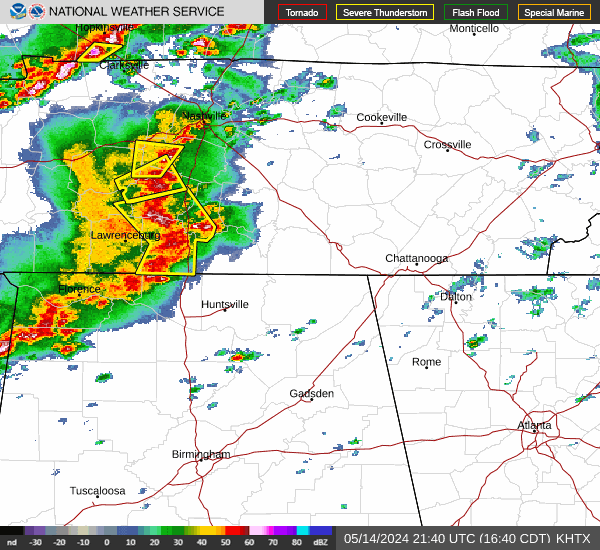
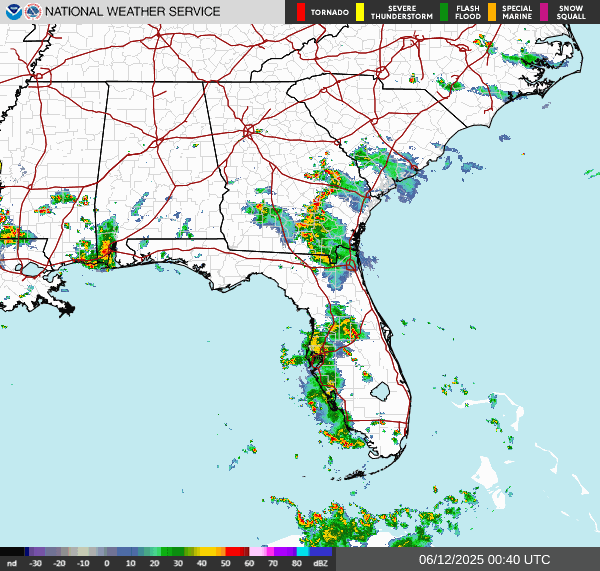



.gif)
.png)




















.gif)
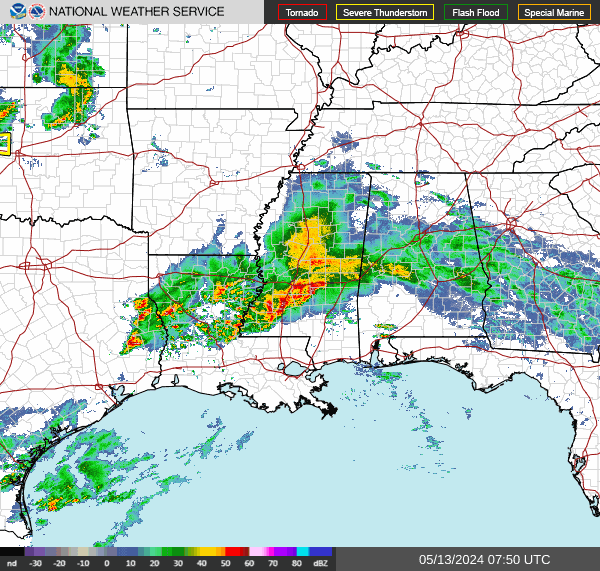
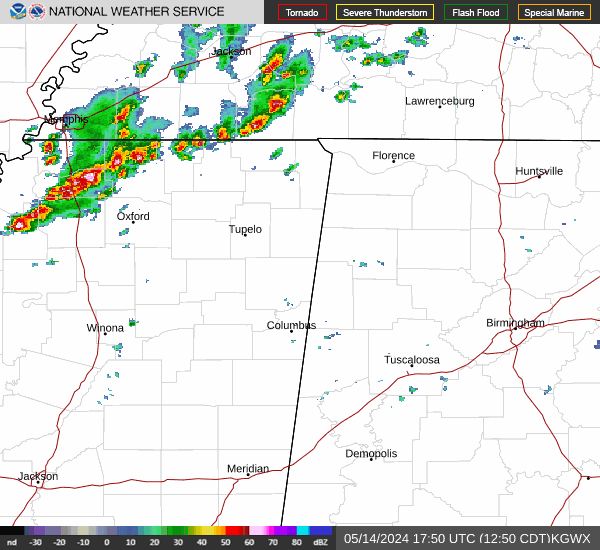
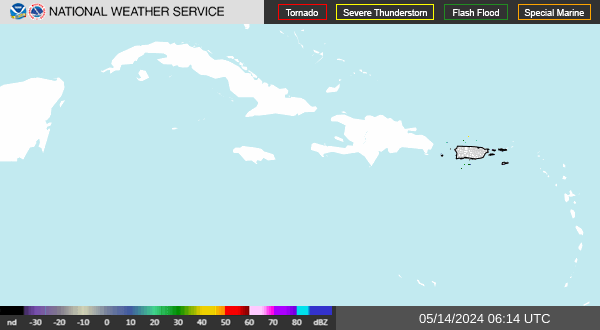



No comments:
Post a Comment